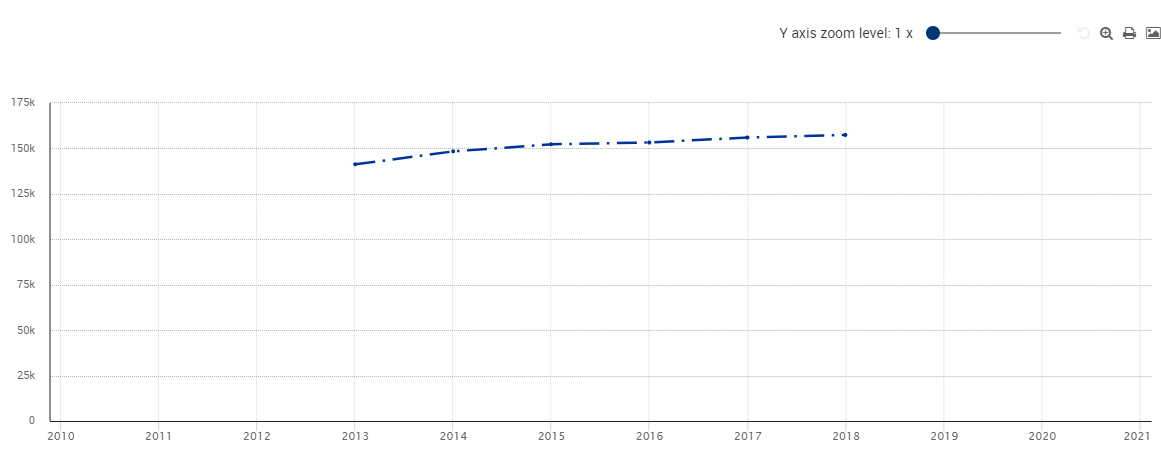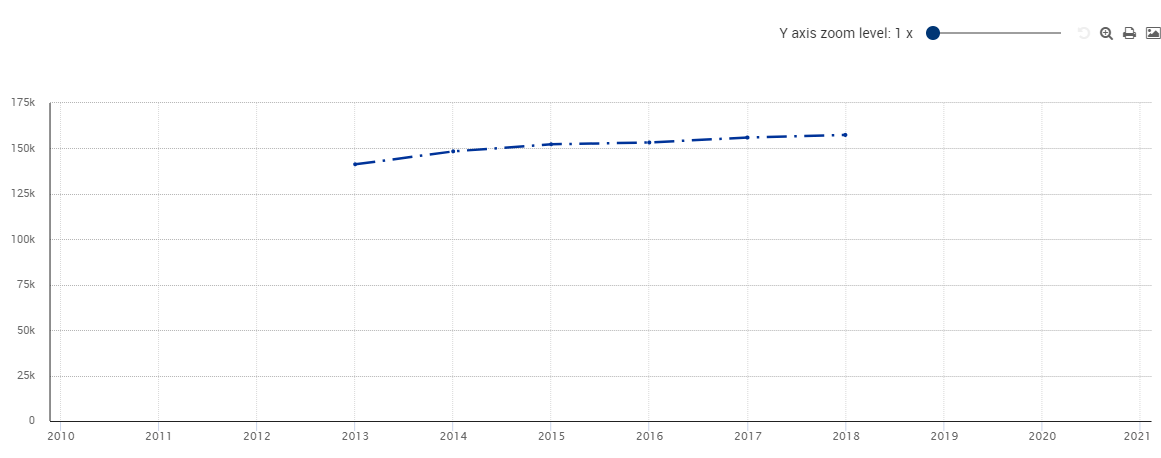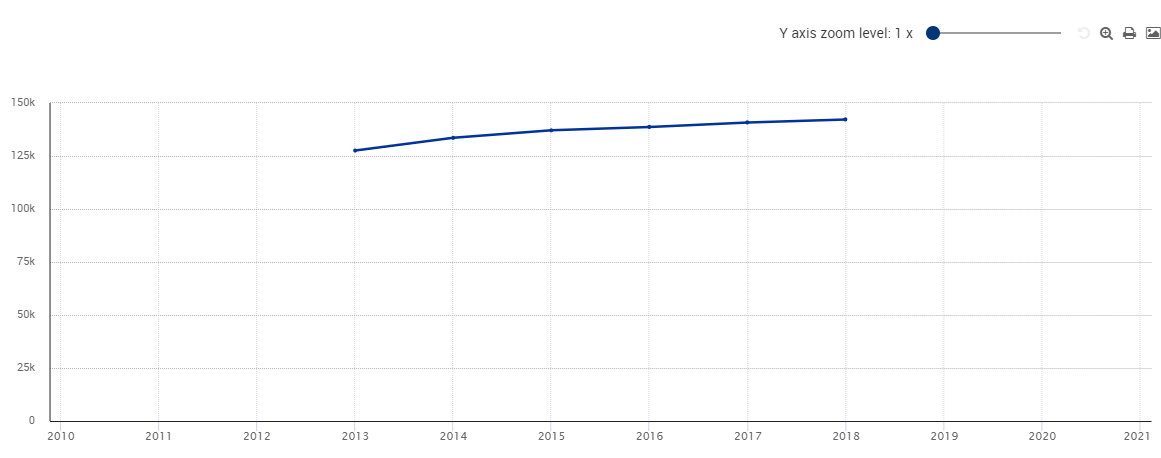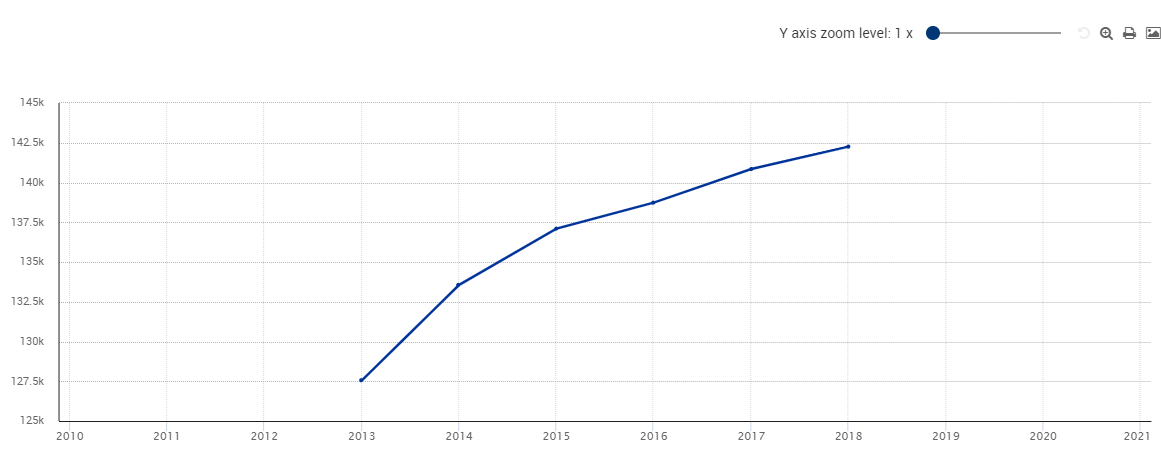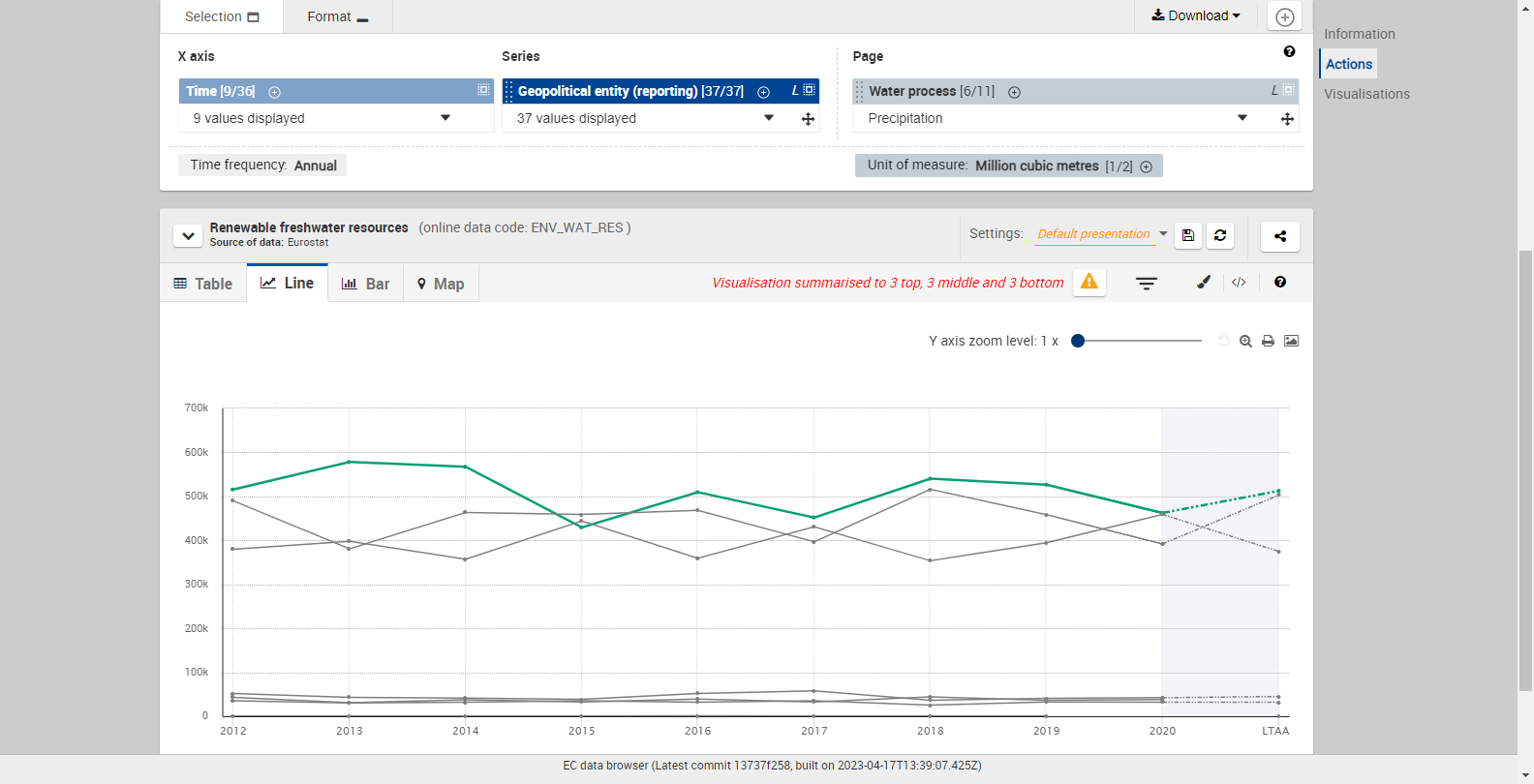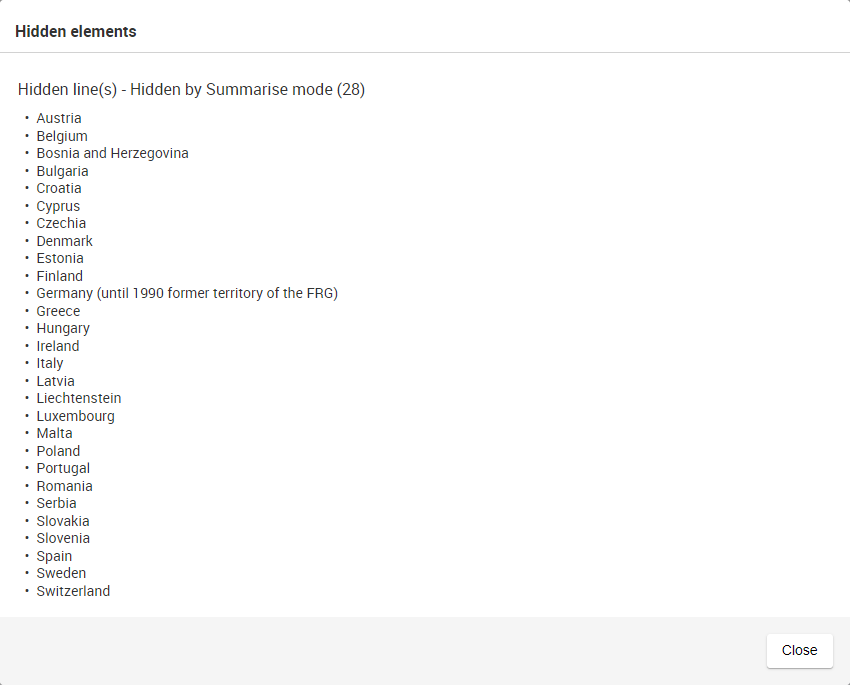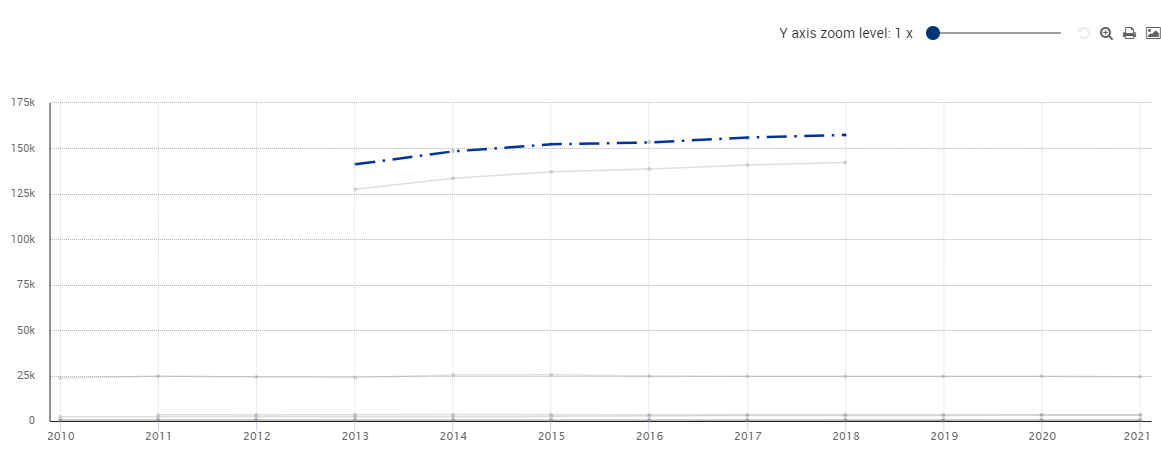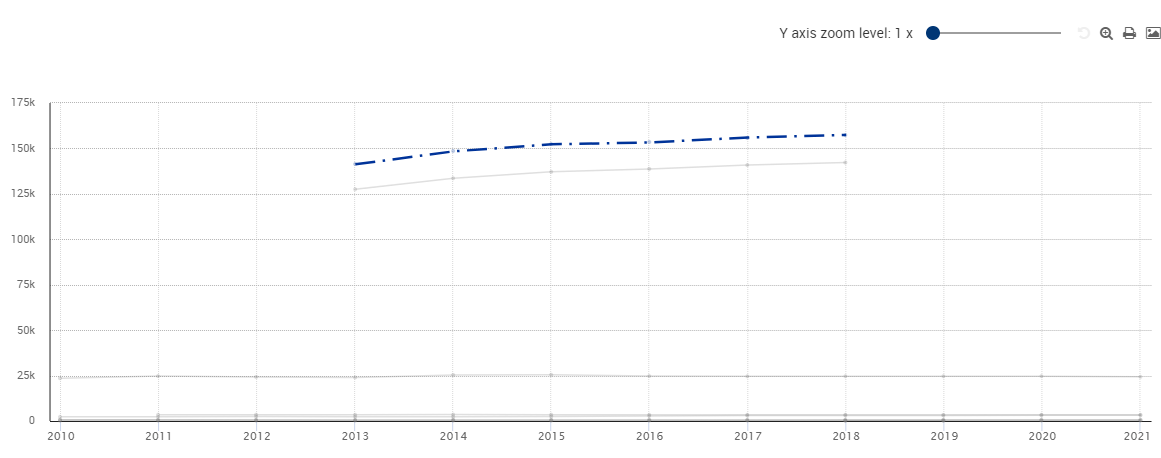...
In the Visualisations section, click on the Line tab to visualise the data with a line chart.
Dimensions Management
The X-Axis displays horizontally. In the example above, it is TIME.
The value of the observation displays vertically
The Series dimension displays a legend below the line chart. The elements of the legend depend on the Data displayed option.
By mouse hovering a line, any line can be temporarily highlighted. The data corresponding to the closest point to the mouse will be displayed at the top left.
...
| Info |
|---|
|
...
| Warning |
|---|
It is not possible to display more than 24 lines in the Line chart. |
Format options
Click on Format (in the Actions area) to set the different format options of the line chart.
...
| Info |
|---|
Labelling options, Decimal symbol options and Thousands symbol options are described on this page. |
| Anchor | ||||
|---|---|---|---|---|
|
Show (default value): When hovering a line in the line chart, flags are shown in the tooltip above the chart.
Hide: Flags are hidden.
| Anchor | ||||
|---|---|---|---|---|
|
Show: If there are Breaks in time (periods where no data is available - 2012 in the example below), the gap will be explicitly displayed as such:
Hide (default value): If there are Breaks in time (periods where no data is available - 2012 in the example below), the gap will be interpolated
| Anchor | ||||
|---|---|---|---|---|
|
Show (default value): The dots representing the observations are displayed:
Hide: The dots representing the observations are hidden
| Anchor | ||||
|---|---|---|---|---|
|
Start from 0 (default value): The chart starts from 0 on the vertical axis
Automatic: The scale of the chart is automatically computed to optimize visualisation
| Anchor | ||||
|---|---|---|---|---|
|
...
Linear (by default): The vertical axis is built using a linear scale: it is proportional. In the example below, the difference between each background horizontal line is 10K worth:
Logarithmic: The vertical axis is built using a linear scale: it is not proportional. In the example below, the difference between each background horizontal line grows when getting away from the horizontal axis:
| Anchor | ||||
|---|---|---|---|---|
|
...
In order to add/remove positions to the chart while in this mode an additional menu is required. This menu is activated by clicking on the brush icon (). It renders a list showing user current selection of positions. The one currently highlighted and thus visible in the line chart are in bold. A position can be added/removed by clicking on its item in the list. The underlying chart is refreshed automatically to allow the user to preview the change to the chart in term of scale and readability.
In case the line chart visualisation is accessed while there is no highlighted positions, the following rule will apply to ensure a baseline chart is rendered:
...
| Info |
|---|
|
...
| Tip |
|---|
Why this rule? First, the default line chart is made consistent to the line chart displayed in the SDG and me application. So there must be one or two series to render by default. Second is that a coloured line chart became quickly unreadable with too many lines so this is an invitation to the user to select the relevant series. |
Summary
The Summary mode allows the chart to display a summary version of the selected data.
...
The Summary mode is not activated in the following screenshot:
The red rectangle shows that 24 positions are selected by the user
The green rectangle shows the 24 lines (except the three positions for which no statistical data is available: Liechtenstein, Norway and Switzerland)
The orange rectangle shows the 24 positions, all of them are (un)selectable to make the corresponding line (dis)appear in the Line chart.
When the Summary mode is activated, the result is the following:
There are still 24 positions selected (red rectangle)
However, only the lines corresponding to the "Top 3 - Middle 3 - Bottom 3" rule exposed above will be displayed. It affects:
The Line chart itself (green rectangle), where all the other lines are masked
The legend under the Line chart (orange rectangle), where only those 9 positions are displayed
A warning message is also displayed (pink rectangle). When clicking on it, or when clicking on the button, a modal will be displayed, listing all the positions for which no line is currently displayed:
Selected
The Selected mode allows the chart to display all the positions from the selection into the chart.
Lines are either rendered as gray line if they are not selected, or coloured if they are highlighted. Clicking on a line or a legend element allows to highlight or unhighlight it.
| Anchor | ||||
|---|---|---|---|---|
|
...
When Show is selected under Series Attribute, the attribute (additional column) is represented in the line tooltip:
Highlight options
...
In the following example, Germany is highlighted:
How do I change the highlight of a position?
...
To remove the highlight of a position, the same operation must be performed.
...
| Tip |
|---|
The highlighted positions are also reflected in the Table mode: |
It is also possible to manage positions what are highlighted and what are not by using the dimension dropdowns (see this page for more information).
...
To print a line chart, click on at the top right of the chart.
...






